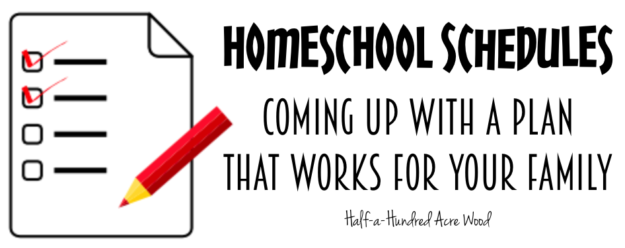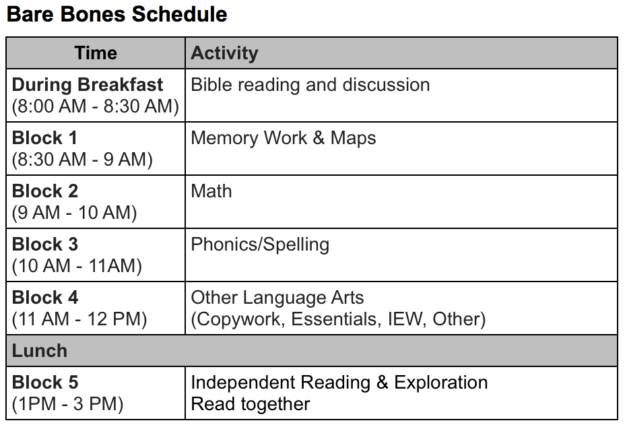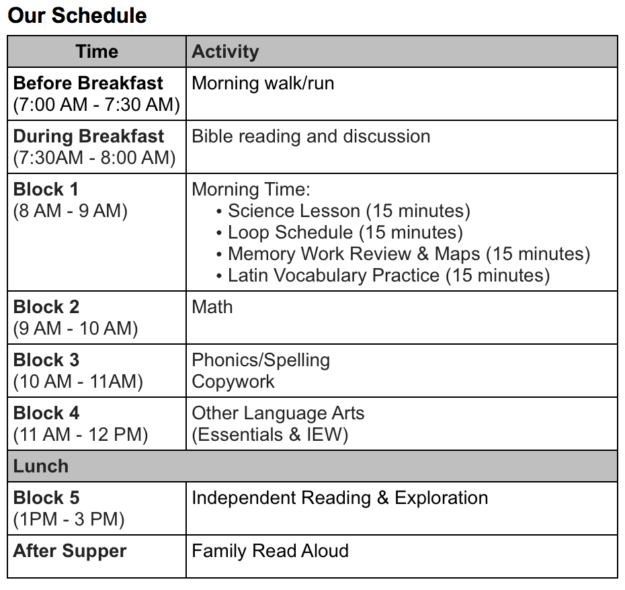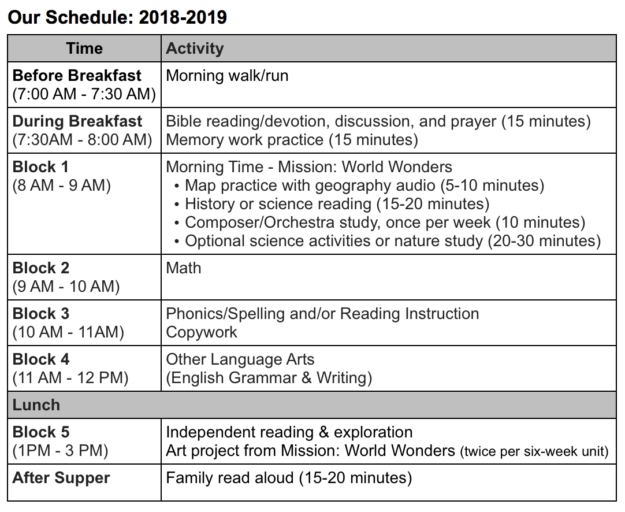
Any time we face a new thing, it can be too scary and frightening and overwhelming to even glimpse at the road that lies ahead. We listen to a thousand voices telling us the best way to do it, all the while making comparisons to others who seem to have it all together. The hardest voice for me is the one inside my own mind that tells me that I shouldn’t even try – that I should just give up and not do this thing that God has planted in my heart. Have you been there?
We’re facing a new thing as a family, and I have to remind myself of something over and over again. When I take my eyes off of God and gaze upon my own abilities and limitations, I’ll only see all the ways I could fail (or succeed, but I usually just see the potential failures when I’m looking through the in-my-own-abilities lens). I’ll forget the clear calling that led me to this decision, I’ll forget that God is bigger than what I face, and I’ll forget that God can use anything, regardless of whether I fail or succeed.
I remember several years ago… when we were just starting to consider homeschooling our children. Man, that was such a foreboding decision. I mean, if we homeschooled, I would no longer be able to blame someone else for my children’s educational or character pitfalls. But my husband and I decided to follow this calling even though we didn’t really know how to do it. I was going to step out of the boat and just trust that Jesus would be there to catch me.
And through every single challenging moment of our homeschooling journey (yes, those moments where I really did desperately want to throw in the towel and call that big yellow school bus), He’s always been there to lift me when I sink. Always.
So why do I forget His faithfulness?
I just wanted to share these thoughts because… even though homeschooling is no longer the big decision for us, we are facing big decisions that are tugging at my heart to reach out to new homeschool families, especially. I don’t want folks to come to this website and throw in the towel before they even start, simply because they’re making a comparison out of context. So… let me tell you that I am not that mom that has it all together. I share my ideas here because I enjoy sharing my work with others. Period.
Let me take you back to when we first started homeschooling. What follows is a bare bones schedule for learning the basics. It was the schedule we followed until our thirst for more truth, goodness, and beauty in our day expanded us to new learning adventures beyond the basics.

That’s a good, solid schedule. And check this out: we didn’t even pursue correlated readings or activities.
Over time, though, our family started to long for the wonder and beauty of music, art, poetry, science, and literature. We discovered the passions of our children and pursued hands-on history studies with our oldest (who has always loved history). And so our reading plans and blog posts started to include these elements of our days. But we didn’t start with the extras. We started with a Bare Bones Schedule.
Every year I’ve posted a schedule we’ve followed. And so… for the 2017-2018 school year, our schedule (for Grades K-6) looked like this:

And for the 2018-2019 and 2019-2020 school years, we updated our schedule to reflect how we use our Mission: World Wonders curriculum and Mission: Faith Forgers Curriculum. (This schedule is geared towards Grades K-6.)

If you’ve seen our American History Reading Plans (for the 2017-2018 school year), Mission World Wonders Study (for the 2018-2019 school year), or Mission: Faith Forgers Curriculum (for the 2019-2020 school year), then you’ve seen the details for Block 1, Block 5, and After Supper. The lessons usually don’t take up the entire block (or hour), so when our children are finished with that subject, they take a break until the next block begins. (Note: In reality, Blocks 2 and 3 are kind of meshed together as I juggle our children through math and spelling lessons. And… our high schooler uses a somewhat different schedule, although he participates in much of our Morning Time.)
Scheduling the High Schooler’s Coursework
For three years, our oldest son was in the Classical Conversations Challenge Program, which consisted of six strands of coursework. Each day, he usually worked on four different strands. Because it was much easier for him to focus on four strands per day rather than doing something daily from all six, he schedules three to four strands for which he completes daily morning tasks, and then he divides up the other two to three strands across the afternoons. In Challenge B (8th grade), his daily morning tasks were Logic, Latin, and Math. (Then he’d spend one to two afternoons each week doing all of his work for one other strand so he’d have all his work finished by seminar day.) In Challenge A (7th grade), his daily tasks were Geography, Latin, and Math. In Challenge I, his daily tasks for the entire year included Latin, Math, and Science/Research. He split the composition (LTW) strand across two days each week (plus reading literature daily) and rhetoric/reasoning in one day per week. The debate strand fluctuated from 2 to 4 days per week based on whether he was preparing for a debate. (There’s quite a bit tucked into that debate strand!)
After leaving Classical Conversations, our oldest son’s work still included about six courses. You can find out more about what he’s been doing for high school (and what our 8th grader has been doing for middle school) here.
Click here to view our curriculum choices for the 2019-2020 School Year.
Our Curriculum Choices (2018-2019 School Year)
This is a rough list of curriculum we planned to use in 2018-2019. We wrote more about these choices and how we scheduled out our middle and high schooler’s work in this later post.
Morning Time
Math
- Jacob’s Geometry from Master Books (10th Grade)
- Principles of Mathematics from Master Books (7th Grade)
- Math Lesson for a Living Education from Master Books (4th Grade)
Spelling, Copywork/Penmanship, and Language Arts
This list includes everything we’re planning to use for language arts across a wide range of ages. (In other words, not everyone is using everything on this list, so don’t let it overwhelm you! Ages/grades are listed beside each item.)
- Spell to Write and Read (Spelling for 4th and 7th grader.)
- Script-n-Scribe Truth Traveler. Poetry, art study, and the simple application of English grammar concepts (for 4th grader).
- IEW Ancient History-Based Writing Lessons (for 4th grader).
- Lost Tools of Writing (Level 1 for 7th grader; Level 2 for 10th grader). Our 10th grader will also be using Notgrass Exploring World History because of it’s integrated learning of history through primary source texts and literature.
- For our 4-year-old, Script-n-Scribe Roller Coaster Writer (large-motor activities leading into fine motor writing skills as he shows signs of readiness) and All About Reading Level 1. Read about why All About Reading is our favorite reading curriculum! (We use a combination of All About Reading and SWR because our children loves All About Reading so much. We use SWR for spelling for simplicity, although it there’s a pretty large learning curve if you’re new to using that program.)
- Visual Latin for 4th grader and 7th grader. Second Form Latin + for 10th grader who is working through the Memoria Press Form Series at an accelerated pace to solidify Latin grammar before starting Henle 2.
That’s what we’re planning for now, but we still have a few weeks to make final choices. 
For reference, I’ve kept the original information from our previous curriculum choices below…
Flashback – Our Curriculum Choices (2017-2018 School Year)
If you’re interested in the curriculum we used for 2017-2018, I’ve listed it here (but it may be subject to change). [Some of the following are affiliate links.]
Morning Time
- Science in the Scientific Revolution
- Loop Schedule: Can You Hear It? by William Lach, William Bennett’s Children’s Treasury of Virtues, Draw Write Now (Book 2, Book 3, and Book 5), Presidential Pets: The Weird, Wacky, Little, Big, Scary, Strange Animals That Have Lived In The White House
- Draw the USA
- Classical Conversations Foundations Guide
- Henle Latin 1 Vocabulary Cards (homemade)
Math
- 3rd Grader: Christian Light Education
- 6th Grader: Life of Fred Decimals & Percents and possibly Pre-Algebra 0 with Physics
- 9th Grader: Saxon Algebra I (with occasional Life of Fred Beginning Algebra)
Note: Life of Fred is what our two oldest enjoy, but Saxon is what I’m most comfortable with, so I use Saxon tests as my framework for ensuring mastery of concepts. And Christian Light Education is a better fit for our 3rd grader.
Math Update – Three weeks in…
We’re three weeks in, and math threw us a bit of a curveball (which I halfway expected, so it was not really a big surprise!). Our oldest (9th grader) decided to drop LoF this school year and stick with Saxon for Algebra I. We found our 6th grader needed extra practice and discipline, so he is working in Singapore Math to solidify the concepts he learned in LoF Fractions. This all happened within the first couple of days of school, and everything is going well as we fall into our routine.
Spelling, Copywork/Penmanship, and Language Arts (3rd & 6th Grader)
- Spell to Write and Read along with some techniques from All About Spelling (read more about it here).
- Script-n-Scribe copywork. (I’m working on a new version for the fall. Until it’s ready, they’ll practice with Poetry Penmanship.)
- Classical Conversations Essentials/IEW
Note: 3rd grader is not in Essentials but will be doing a scaled-back version of EEL/IEW alongside his older brother.
Family Read Alouds
Picture Books for independent reading or reading together with our 3-year-old.
Note: The 9th Grader is in the Challenge I Program, which dictates his curriculum choices and reading selections for the coming year. And our 3-year-old is not ready yet for writing (I mean, we just now potty-trained him), but when he is, we’ll use the Roller Coaster Writer to introduce phonics and handwriting.
As we face this new year, realize it’s okay to start with the basics. Your plans will likely shift and change over the years as you discover the learning adventures your family most enjoys. Or… you may opt to continue with a basic schedule so that your child can pursue the art of playing in the dirt all day. Either way, remember that God can use all things (even the major mess-ups!) to work together for the good of them that love Him and are called according to His purpose. (Romans 8:28)
If I can ever help along the journey, just give me a shout! I’d love to connect with you in some way – to answer questions, to explore ideas with you, or to offer prayers of support.
With Prayers and Blessings,
Brandy



